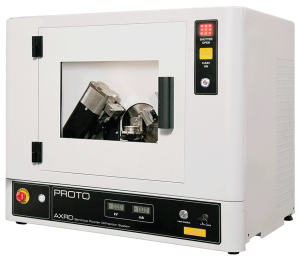Concrete is the single most prevalent building material used worldwide; with over 2 billion tonnes being produced each year. Concrete is created by mixing hydraulic cement with water and some type of coarse particulate material, such as sand or gravel. Hydraulic cement acts as a binder and sets and hardens when exposed to water. The most common type of hydraulic cement used around the world is Portland cement, which is classified based on its phase composition as type I,II,III,IV,V using ASTM C150 standards, or as CEM I, II, III, IV, V using European EN 197 standards.

The performance characteristics of the cement are directly related to its phase composition, for example, ASTM Type III cement develops high early strength and is characterized by having a larger mass fraction of Alite. In comparison, ASTM Type IV
cement is known to have a low heat of hydration and is characterized by having a much lower mass fraction of Alite. Therefore, having prior knowledge of the phases in a cement mixture and their relative amounts allows one to have control over the physical characteristics of the final product.
Traditionally used methods of phase composition analysis include microscopy, chemical analysis and the Bogue calculation. However, none of these methods allow for rapid and accurate multi-phase identification and quantification of a sample. X-ray powder diffraction (XRD) is the only direct method for qualitative and quantitative multi-phase analysis of a cement sample.

Quantitative Phase Analysis – Rietveld Refinement
Portland Cements Blended Cements
Limestone Gypsum
Clinker Aluminate Cements
Blast Furnace Slag Silicates
